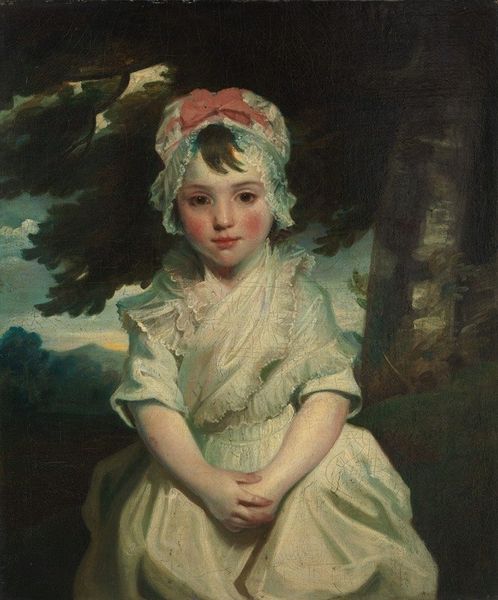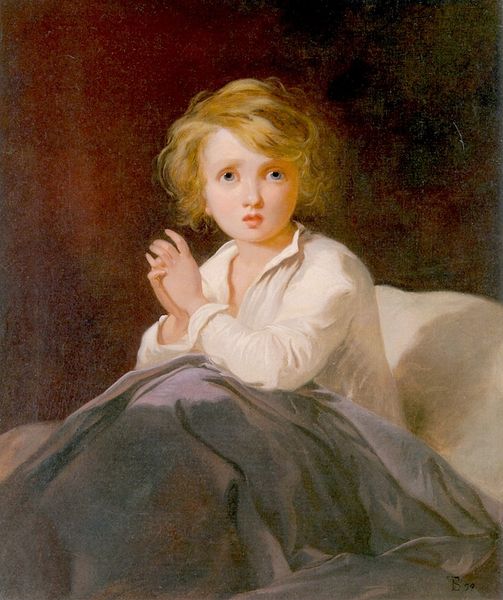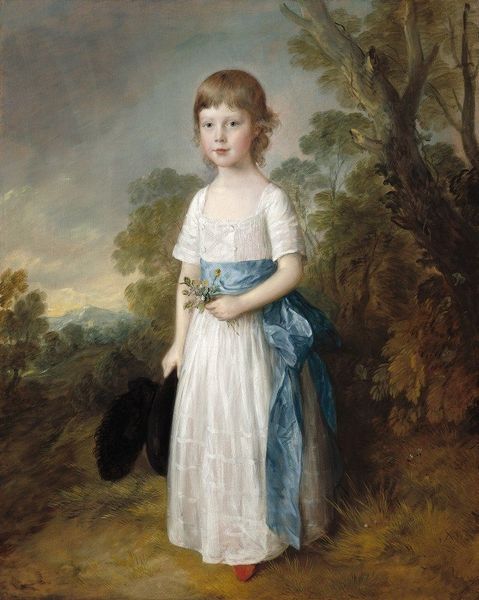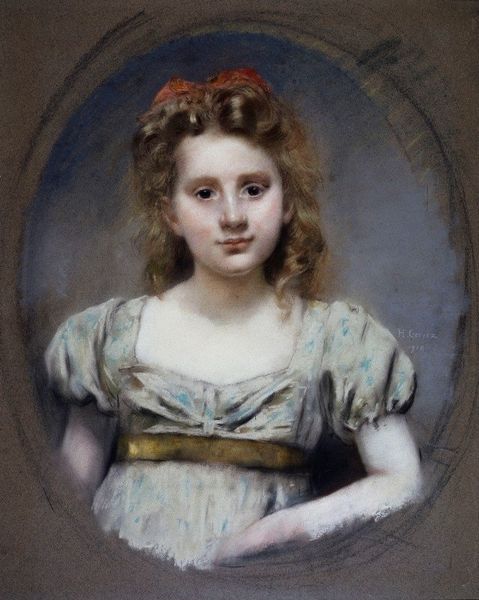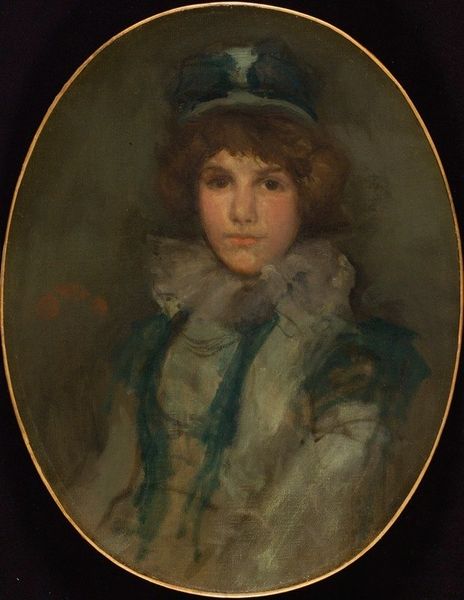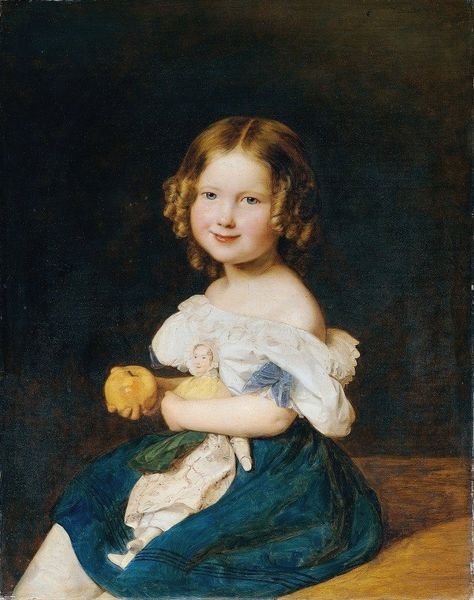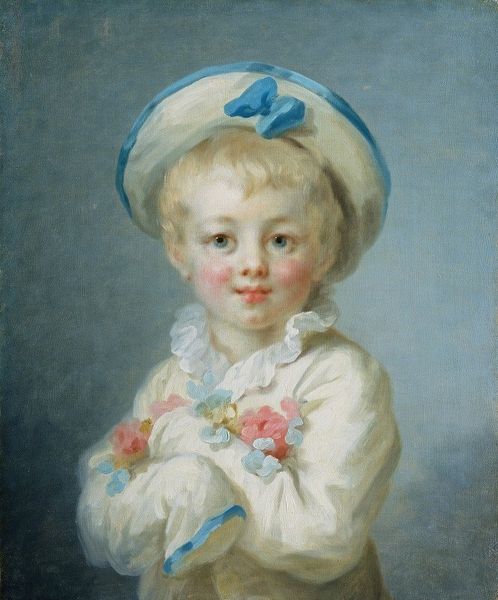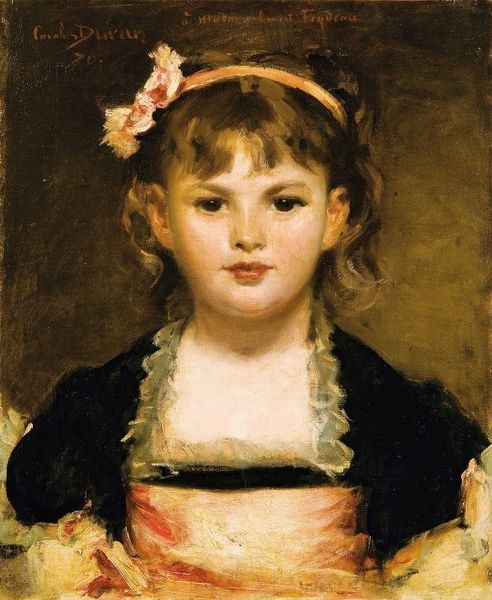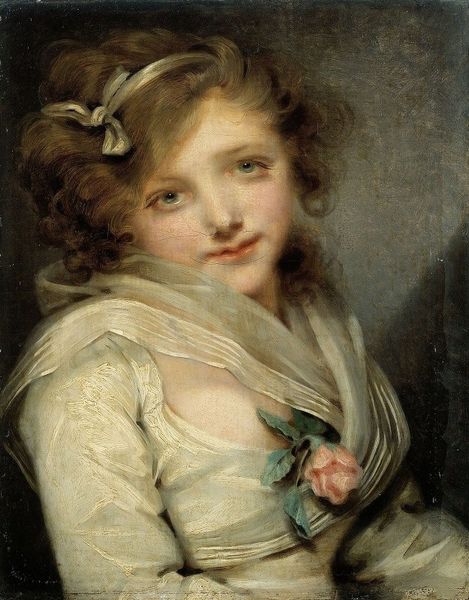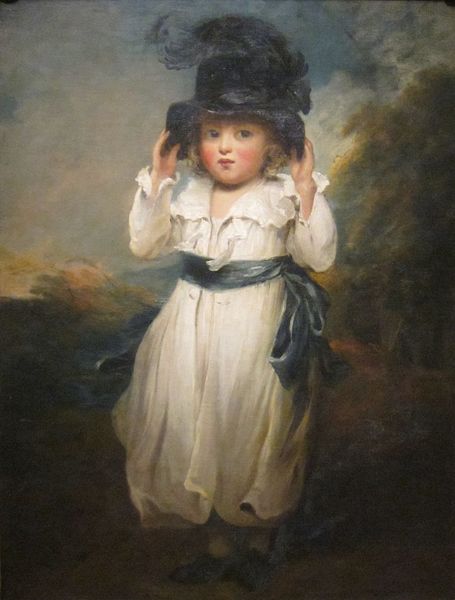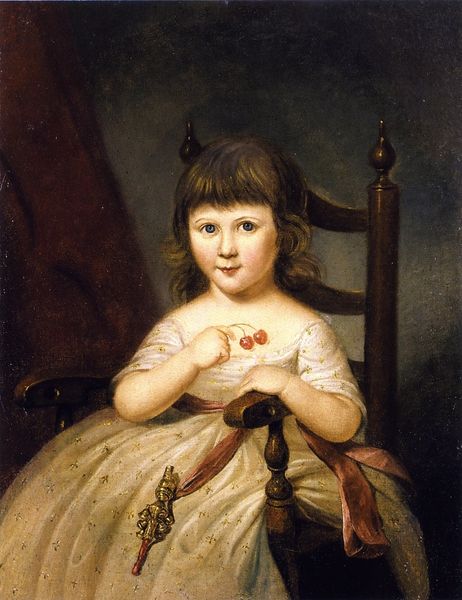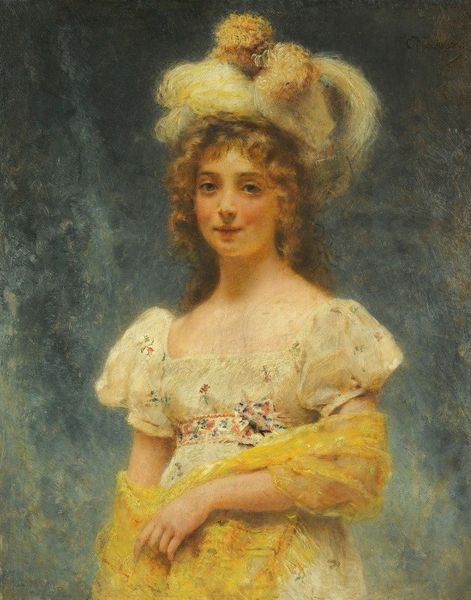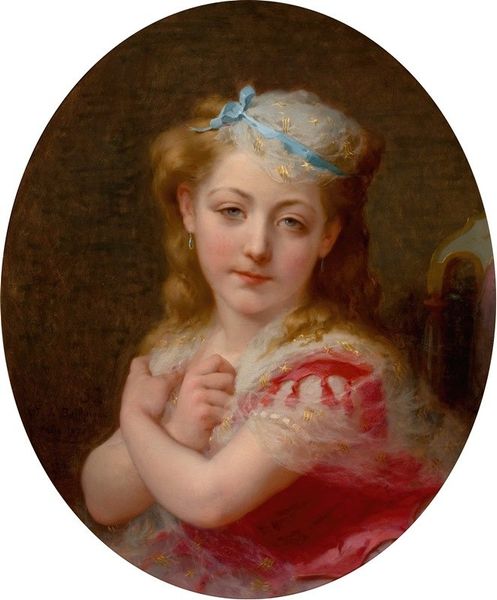
Copyright: Public Domain: Artvee
Curator: Look at the masterful use of light in this portrait, "Miss Charlotte Papendick as a Child," painted in 1788 by John Hoppner, utilizing oil paints to capture an image of youthful innocence. Editor: My first impression is one of unsettling stillness. The composition feels staged, almost claustrophobic, despite the apparent pastoral background. There's an unsettling blend of idealized innocence and implied societal expectation. Curator: Indeed. Hoppner’s skill with the medium is remarkable. Note the careful rendering of the textures – the delicate lace of her bonnet, the smooth satin of her sash. Considering the labor required to create the pigment and the canvas, it highlights the privileged position of both the artist and his subject. Editor: The clothing certainly tells a story about societal norms and class distinctions, right? This isn't just a portrait; it’s a statement about inherited status. The act of commissioning such a work normalizes the notion of wealth and leisure as inherited birthrights. Think of the cost of production alone! The textile manufacturing involved is just the tip of the iceberg. Curator: Quite. I am also curious about Hoppner’s approach. One can notice a move toward Romanticism evident in the softer brushstrokes and emotional sensitivity to this young girl, in this Neoclassical era. The subtle blush on her cheeks, the gentle curve of her lips – it's a deliberate construction of idealized childhood. Editor: An idealized childhood achieved through artifice, carefully curated for public consumption. We are meant to see innocence, but I see the weight of expectation in her demure pose, a posture crafted to reflect the constraints placed upon women of her social standing, right down to her diminutive position in this very large painting. I mean, she seems powerless, even passive. Curator: An interesting perspective! Seeing her material wealth, one might conclude, perhaps mistakenly, that Miss Papendick has great opportunity for the future. Yet it makes us reconsider what those opportunities entail. Editor: Exactly! Her portrait captures an image from a very different time that allows us to question and challenge present circumstances around equity and societal justice. Curator: Thinking of the means of making this artwork certainly illuminates the social conditions from which it comes! Editor: And the portrait challenges the concept of portraiture itself. Seeing what appears, and isn’t.
Comments
No comments
Be the first to comment and join the conversation on the ultimate creative platform.
